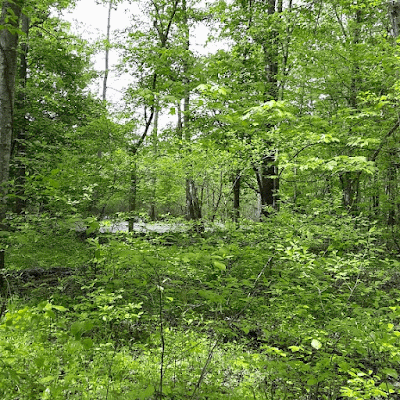One day, a few of us hiked up to Avalanche Lake. It was a lovely hike with Varied Thrushes singing in the background. An American Dipper even made an appearance at the lake.
One of the highlights of walking to through the woods is the occasional surprise orchid. I found my first White Lady's Slipper along a path to the Apgar campground.
After the family portion, I went to visit my best friend from first grade who now lives in Boise, ID, by way of the the Bitterroot Mountains along the border of Montana and Idaho. I always assumed that "bitterroot" described the mountain range since it presented a formidable challenge to the Lewis and Clark "Corps of Discovery" expedition. In fact, the mountains are named for a lovely wildflower. I found a patch of bitterroots at the National Bison Range.
Further along the way to Boise, I stumbled onto a national park that I had not yet heard of - Craters of the Moon National Monument. It was a facsinating geological oddity along the Great Rift in the valley of Pioneer Mountains of Idaho.
One of the highlights of Craters of the Moon was exploring the lava caves with a ranger. The hot summer temperatures gave way to cool cave air. One of the caves had ice, and I could see my breath.
My friend and her wife gave an excellent tour of Boise. One of my favorite stops was an overlook of the Snake River where we watched the aerial displays of several Prairie Falcons for an hour.
The trip ended back at Glacier in Montana, just as the Going-to-the-Sun Road was opening. The road was clear, but the fog prevented much sightseeing. On a hike to Hidden Lake that required slow and steady steps atop a foot of snowpack, visibility was limited to about 50 yards, adding to the sense of isolation and mystery. Occasionally, the fog would lift to reveal a beautiful meadow pond or the caravan of hikers ahead and behind. But I never did see the "Hidden Lake."













































